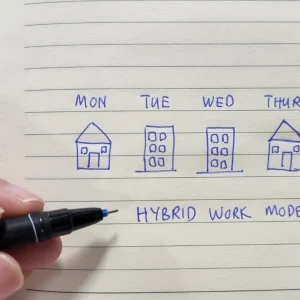
Transforming central government requires not just a revamp of legacy systems but also a new culture and cadence of working, according to Gina Gill, interim chief digital and information officer (CDIO) of the Ministry of Justice.
Since Gill took on the role in February, the MoJ’s digital, data and technology function has set out a one-year mission aligned to the department’s overarching objective to rebuild public confidence in the criminal justice system. “Our mission to build confidence and create simplicity aligns to that [objective], and if the public is going to have confidence in justice services then the technology that underpins those services needs to work,” she says.
Speaking to Tech Monitor, Gill shared her strategic priorities for the department, the technology areas her team is working on, and why she looks to strategic partners such as AWS for inspiration on ways of working.

A smaller department than some of Whitehall’s behemoths, the Ministry of Justice employs more than 77,000 staff and has responsibilities for courts, prisons and probation services. It works with more agencies and public bodies than all other government departments bar the Department for Digital, Culture, Media and Sport, and the Department for Business, Energy and Industrial Strategy.
“We’ve grown a huge amount over the last 18 months to two years, and we’ve got growing pains,” explains Gill. “When you go from a few hundred people to a thousand people in a short space of time, things don’t quite work in the same way that they did before.”
During Covid, I’d never been in so many meetings where colleagues were so grateful and happy about what we were doing.
As in many organisations, Covid-19 showcased the MoJ technology team’s value and contribution. “During Covid, I’d never been in so many meetings where colleagues were so grateful and happy about what we were doing,” she says. “And that’s not just at the MoJ, that’s my entire career in technology.
“That’s been fabulous and a huge boost for our people, but it’s been really full on, and what we now need to do is think about how we leverage that,” she adds. “But in a non-crisis world and at a non-crisis pace.”
One way Gill aims to keep the momentum going is by forging joint strategies with the Ministry’s various agencies. “For example, we’ve launched an HMPPS [Her Majesty’s Prison and Probation Service] digital strategy jointly with that part of the business, really focusing on what they want to do from a digital perspective which is something that that organisation hadn’t done before.
Before Covid-19, HMPPS has been “traditional in the way it operates, quite paper-based,” Gill explains. “To see them go from that to jointly publishing a digital and technology strategy with us is fabulous.”
With demand for digital services sky-rocketing, Gill says that an important part of her role is to work with the executive committee to set priorities and to ensure that the bad procurement practices of the past don’t re-emerge.
“Demand is through the roof, and is coming in at a pace at which we are struggling to keep up,” she says. “It’s not a quick and easy process to bring in more people to do things.
“And the danger is that if we don’t do things then people will go off and do outsourcing to the big consultants, who again build something that gets flung over the fence and we spend years unpicking.
“We need to be really careful we don’t end up in that place again.”
Ministry of Justice CDIO on tackling technical debt
Paying down technical debt is a significant challenge for Gill – as it is for her colleagues across Whitehall. When the government published its ‘Organising for Digital Delivery’ report in July 2021 the legacy systems challenges were laid bare – £2.3bn of the UK government’s total IT expenditure of £4.7bn was spent “keeping the lights on” and patching up decades-old legacy systems.
Legacy modernisation is a priority for the MoJ, says Gill, as it is for the Central Digital and Data Office (CDDO) and across government. “It’s really challenging, but if we don’t there is the risk that it will fall over, you have the risk of a security breach, the risk it might not quite do what you want it to do, it’s costly to change and all those things.”
For Gill, ‘technical debt’ means more than just the risk that ageing software platforms will be impossible to upgrade, but also the danger that they become prohibitively expensive to maintain. “If I have a dependency on one person who created something – who if they leave I can’t do anything to it – then for me that’s technical debt,” Gill says.
If I have a dependency on one person who created something – who if they leave I can’t do anything to it – then for me that’s technical debt.
“Things that are built, handed over to digital and technology and we don’t have the resources or money to look after it, then it’s immediately on the technical debt pile because it’s not going to be looked after.
“And if we’ve outsourced the building of something to a supplier – and there’s no documentation and we don’t understand it and we can’t change it and we can’t evolve it to meet the needs of the organisation, then that’s technical debt because at some stage I’m going to have to pay that down.”
Developing technology talent in central government
Technical debt also has a knock-on effect for another strategic focus area for Gill – talent and skills. “We have a system where we have to give people a big manual to be able to use it when they arrive – how are we going to be able to employ and retain people in the future? We need to be thinking with that lens of what does our future workforce look like.”
Gill’s team at the MoJ is dispersed across the UK at hubs in Glasgow, Nottingham, Sheffield, and Birmingham, with fewer than half of her department based in London. She believes that “in a country that doesn’t have enough digital capability,” government departments have a responsibility to bolster the country’s digital skills base.
The CDDO is leading cross-departmental initiatives on skills, Gill reports, such as establishing pay grades so departments are not competing with each other on salaries. “At a very basic level we’re all grappling with the same issues,” she says. “There’s a bit more appetite for people to interact and help each other which has been really helpful coming in to this role – and the CDDO’s definitely had an impact.”
Gill’s predecessor as the MoJ’s CDIO – and her former boss – is Tom Read, now chief executive of the Government Digital Service (GDS). The pair speak regularly and are aligned on what is required “to make things better from a digital perspective”. The MoJ is also part of discussions with GDS and other departments for a new digital identity programme. Funding for Verify, the UK government’s most recent digital identity initiative, was withdrawn in 2020 after the Public Accounts Committee found it was “failing its users and struggling to meet key targets”.
The MoJ’s technology priorities
While personally interested in bleeding-edge technology innovations, Gill’s current focus is on “using basic technology” to improve services. This includes making sure all the MoJ buildings have WiFi, and rolling out devices to offenders “so they can do their own admin – so that prison officers don’t end up being their administrators, and giving people access to education”. Gill has been rolling out in-cell devices for offenders at 13 prisons across the UK, and upgrading beyond end-of-life end-user computing across the prison estates.
When it comes to areas of technology innovation, data offers the MoJ one of its greatest opportunities, says Gill, from finding value from information in systems to providing greater transparency to the public. Unlocking this value requires simplification of data infrastructure, she says, and asking some basic questions about the ownership of data sets.
We print in the region of 750 million pages a year. That’s bonkers.
Automation is another area with a lot to offer the MoJ, Gill says, particularly in reducing the volume of paper it uses. “We still have a ridiculous amount of paper; we print in the region of 750 million pages a year,” she says. “That’s bonkers.”
Drawing inspiration from the tech giants
Getting the technology basics right is essential but Gill argues that transformational change in departments such as the MoJ will not be possible without establishing new ways of working.
“There is a huge amount of work to do around culture and ways of working,” she explains. “We currently operate in a world where it’s business-as-usual, and big projects and programmes – massive things which take years and years to deliver.
“We are trying to move to a mindset where we create a set of services, and we manage those services on an ongoing basis and continuously improve those so we don’t have to replace a piece of software or 70,000 computers at the same time every five years.
“We have to move to a different way of doing things and one of the biggest challenges is doing that in an environment that has been inherently set up to do things in a different way.”
Gill looks to the technology sector and her supplier base for inspiration, and has had discussions with the likes of AWS and other strategic partners about how they work in terms of digital delivery.
“We’re taking out big monoliths and building microservices,” Gill says. “But how micro should those services be? Is microservices even going to work in government because how many teams do I need to look after those – what is my end landscape going to look like because I’m never going to have 20,000 looking after digital services?
“I’m speaking to other organisations about how we might set ourselves up to create empowered teams that can go and get stuff done without having to think or worry too much about the rest of the organisation they are part of, and of the rest of the civil service structure.”






